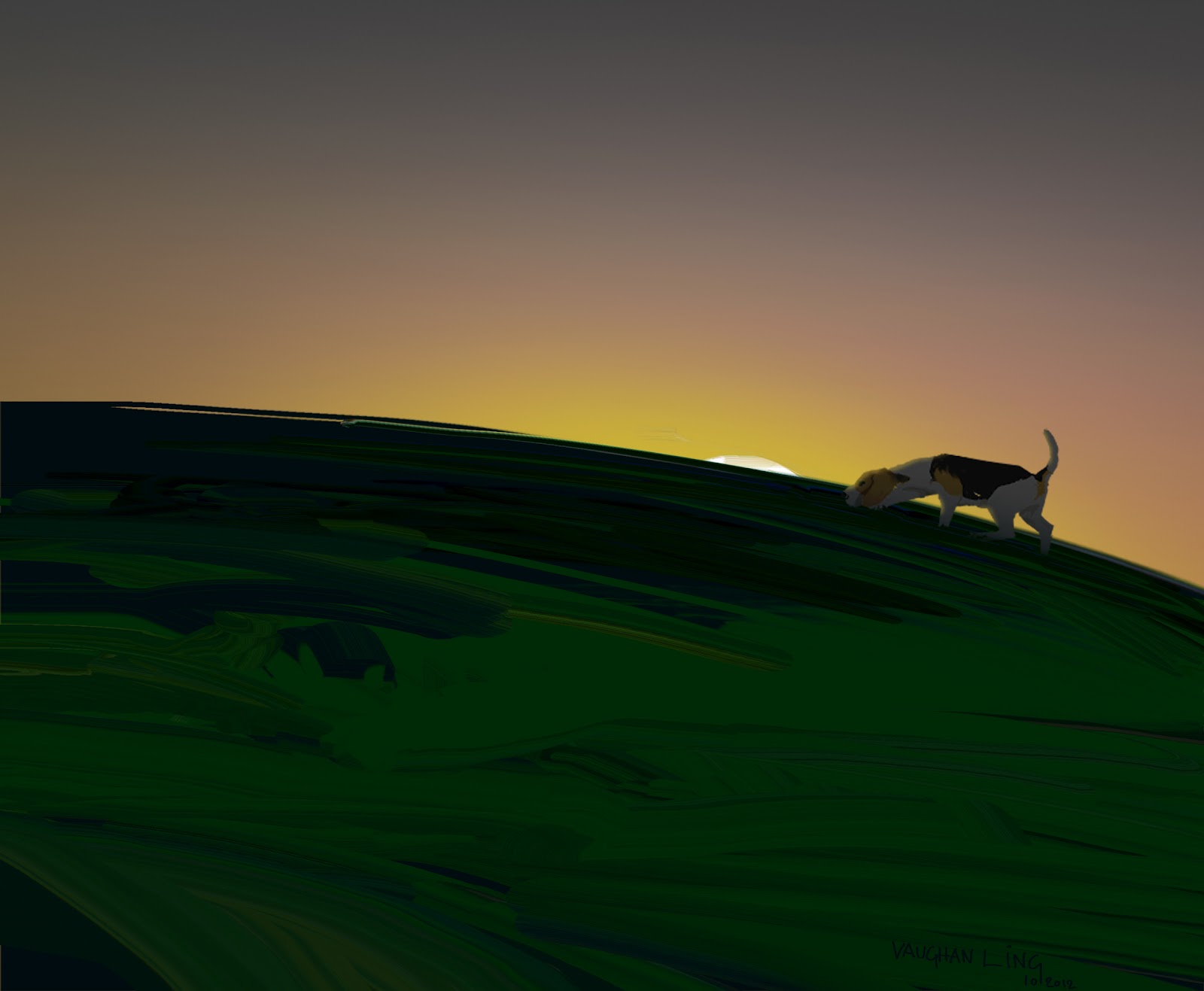

This sense of touch is a gift in his objects as well. Artschwager exploits this texture to beautiful effect, finding in its random patterns the whorls of Van Gogh and the gentle haze of Seurat's black-and-white drawings. These are worked on Celotex, a fibrous paper with a variable grain. Those dud dots and commas, for example, seem quite unconnected with his dreamy pastoral paintings. Artschwager can be subtle, humorous, elegant, complex and then produce something stubbornly blank and dead-ended. This is the perplexing thing about the Serpentine show - his thoughts are sometimes as hard to catch as his overall tone. These free-floating forms must mean something special to Artschwager, because he keeps on making them year after year. Playfully released from their grammatical sentence, I guess, but disappointingly literal none the less. Nor do the giant 3D commas and exclamation marks that punctuate the gallery's architectural space. Together, however, they don't add up to much. There's the guessing game, and the notion that each unlabelled crate might be a pure new sculptural form in itself. Several plywood crates have been constructed to fit mystery objects: an altar, a prayer-stool, a piano perhaps. A black ball that rolls around the gallery has two words - 'Yes' and 'No' - written at opposite poles like an executive toy. Some of it even seems bewilderingly simple. In making a witty virtue of the basic illusion inherent in grey wood-grain Formica, Artschwager reverses the formal relationship between object and painting. It's tricky to decide, rabbit-duck fashion, whether the wooden frame around a painting is real or just a two-dimensional drawing, so tricky that you give the frame more attention than the picture. A square of yellow propped on top of another tallboy doesn't look much like a mirror, until you notice that it reflects sunshine on the surface below exactly like a mirror. Some of Artschwager's double-takes are simply achieved with Formica. Yet its grain is improbably magnified and rendered in photographic black and white, multiplying the sequence of perceptual confusions.

But it's not your own and is, in any case, much too large to be realistic, despite the fact that it turns out to be a photo-real painting.

Take Portrait 1, a chest of drawers supporting a mirror - or is it a painting? You expect to see a mirror, and the frame seems to hold the slightly fugitive image of a face. Illusion is crucial to the games he plays with representation. Everything, from the familiar shapes to the false veneer, is figurative in essence. But Artschwager was never brash and immediate enough for pop, and there is nothing abstract about the forms he creates. Others saw minimalism in its reduced and cubic form. So how is it to be described, this conundrum of an object, this hybrid of picture, sculpture and house hold furniture? Some people called it pop, noting the cheap Formica and the low-art product. Moreover, you could actually eat dinner off its horizontal surface, so nearly does it mimic the properties of a table. But this image of a table is also an object in its own right, a picture described in three dimensions. Legs, top and cloth are represented as flat, two-dimensional planes, much as they might be in a drawing or a painting. What you see is a big rectangular block surfaced with Formica: a sheet of pink across the top, extending down the sides in four neat triangles, and a leg at each corner, inlaid in the faux-wood variety.

The most famous of them, Table With Pink Tablecloth (1964), is among the 50 or so works in his show at the Serpentine. The first objects looked a bit like furniture gone awry: doors you couldn't open handles too big to grasp chairs with no space beneath them in which to tuck your ankles.
#Art of illusion chair series#
The what in question was a series of blockish constructions in Formica and wood, not-quite-sculptures that represented the appearance of everyday objects in a radically simplified, almost comic-book style.Īrtschwager, who trained as a scientist, then an artist, before becoming a furniture designer, began making them when his Manhattan workshop burned down in 1958. Julian Opie should certainly have been included and possibly even Claes Oldenburg as the painter Donald Sultan once observed: 'What he does soft, Artschwager did hard.' But another show held that same year revealed the moral of this fable, namely, his influence on two generations of hares, among them Malcolm Morley, Jeff Koons and Robert Gober. While other Sixties artists sped forward to hype and glory, he didn't receive a major US retrospective until 1988. Artschwager himself has always moved at a slow and steady pace, being something of a tortoise in a field of nippy hares.


 0 kommentar(er)
0 kommentar(er)
